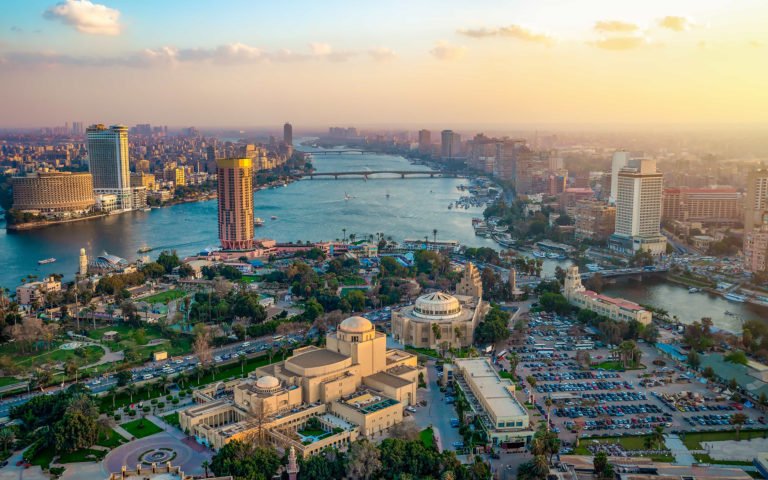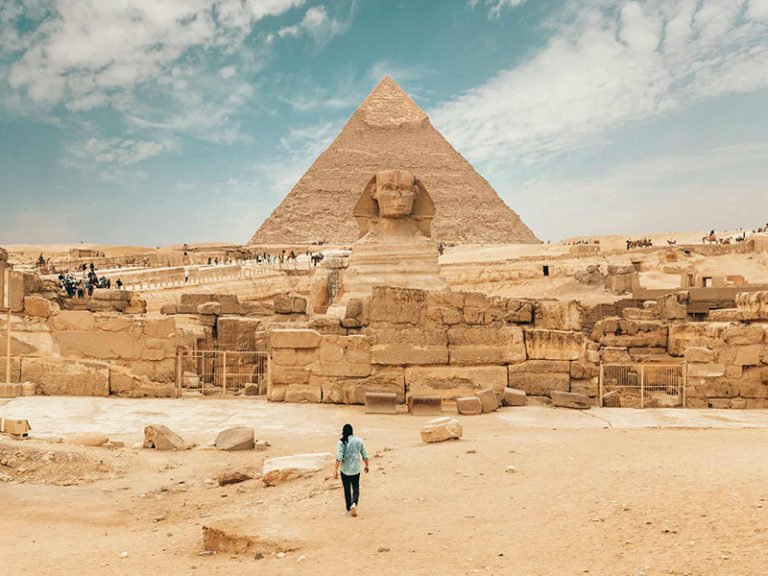
History
Ancient history and settlement.
Cairo has its roots in the ancient settlement of Memphis, now 24km (15 miles) southwest of the city. It was founded in 2,000 BC and ruled by King Menes who united Upper and Lower Egypt. In the 1st century, the Romans built the Babylon fortress on the Nile, the oldest structure in the city.
Cairo itself was established as the city of Fustat by the Fatimids in the 10th century. So began a period of huge construction of prominent landmarks, including Al-Azhar mosque. As Cairo was a key link on the east-west spice route, the market streets of Khan el-Khalili became a bustling centre of trade.

Geography
Cairo is located in northern Egypt, known as Lower Egypt, 165 kilometres (100 mi) south of the Mediterranean Sea and 120 kilometres (75 mi) west of the Gulf of Suez and Suez Canal. The city lies along the Nile River, immediately south of the point where the river leaves its desert-bound valley and branches into the low-lying Nile Delta region. Although the Cairo metropolis extends away from the Nile in all directions, the city of Cairo resides only on the east bank of the river and two islands within it on a total area of 453 square kilometres (175 sq mi). Geologically, Cairo lies on alluvium and sand dunes that date from the quaternary period.
Until the mid-19th century, when the river was tamed by dams, levees, and other controls, the Nile in the vicinity of Cairo was highly susceptible to changes in course and surface level.




